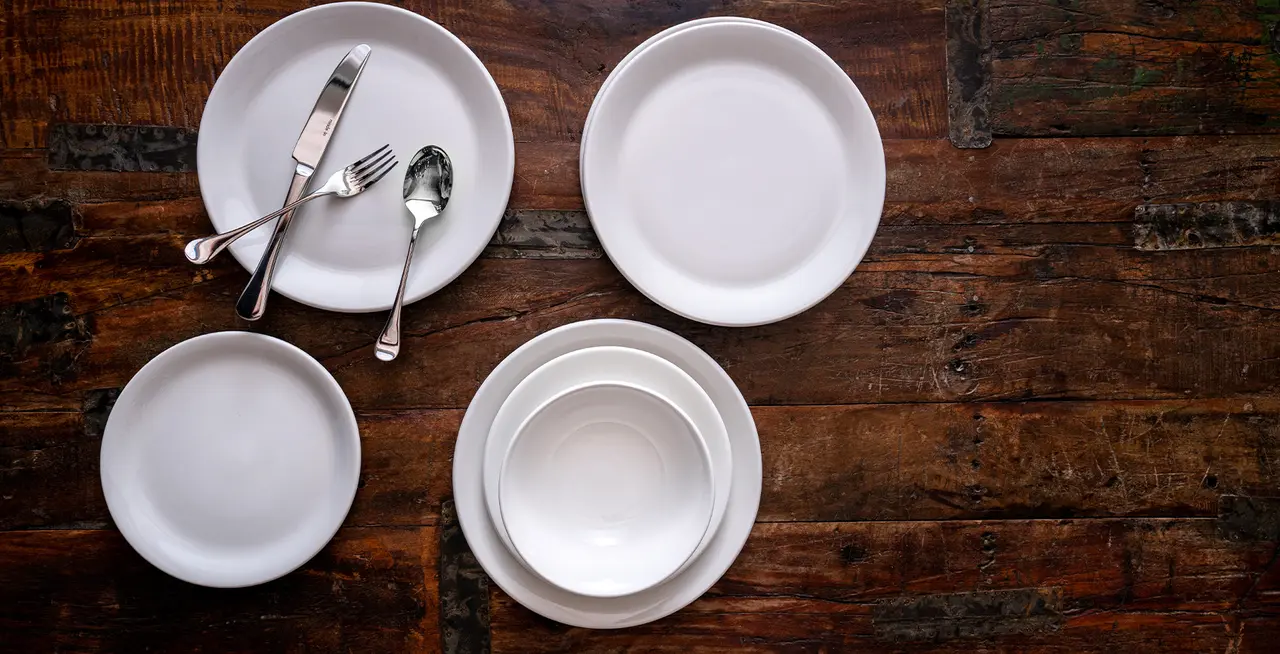If you’re anything like us, your very first set of trusty plates were a budget buy that lasted until they were scuffed and chipped beyond recognition. While they may have served their purpose, you’re now thinking about an upgrade. We support you in your journey—both for aesthetic reasons, and for your safety (plateware that cracks or chips easily is a serious health hazard).
So, if you want to eat lovingly prepared roasted chicken and spaghetti with red sauce off of your new plates for years to come, you need to do a little research.
We recommend reading the full guide in order to choose the best plates you can find, but if you’re in a hurry, the big takeaway is this: Sturdy, high-quality plates tend to cost a little more than your standard big box store options, but they will last longer, look and hold up better, be safer, and save you money in the long run.
What Kind of Plates Do You Need?
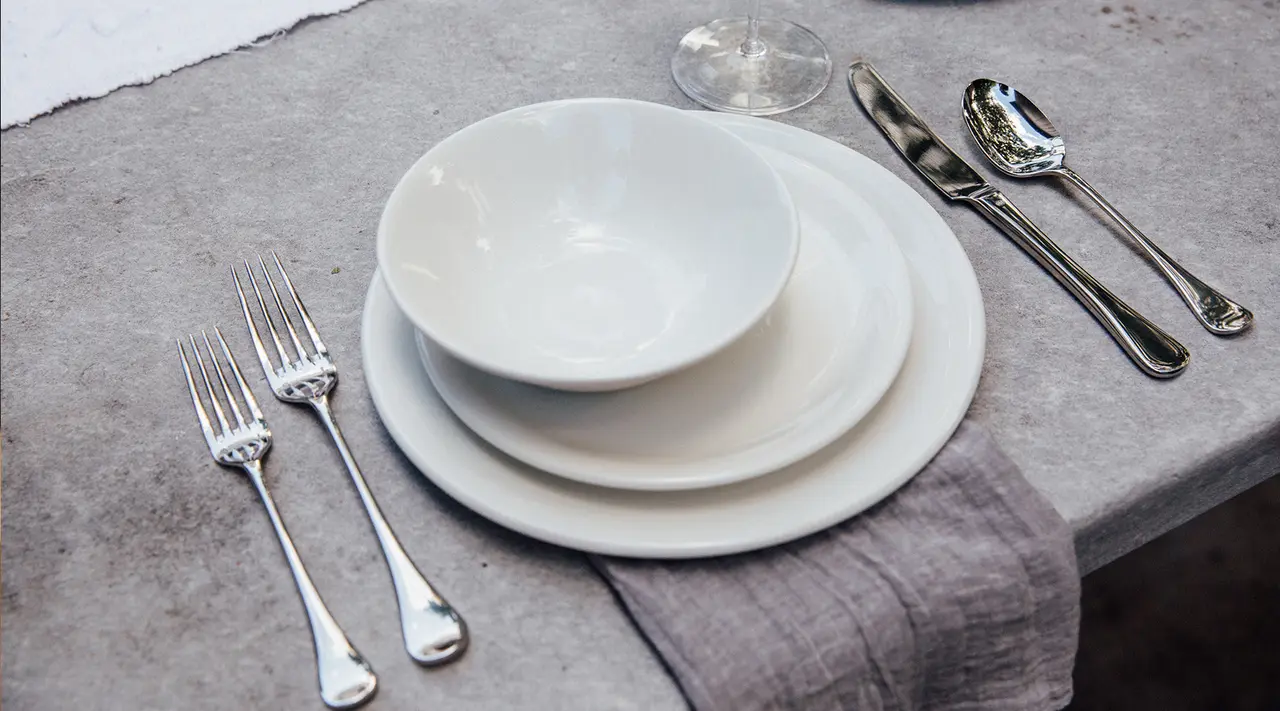
When it comes to plates, one size does not necessarily fit all. The 4 main plate varieties are the Dinner Plate, the Appetizer Plate, the Entrée Bowl, and the Bread and Butter Plate, each named according to the course it’s designed for. Here’s how to decide which of these you need.
Dinner Plates
Typically around 10 inches in diameter, Dinner Plates should be just big enough to fit a protein or other main, along with a couple of sides. Anything smaller risks feeling crowded, while anything larger would leave a lot of unwanted empty space and possibly even veer into Serving Platter territory. Basically, a Dinner Plate should make your dinner look bountiful, without allowing it to overflow.
Unless your typical dinner consists of tapas or other small, shareable plates (which we'd honestly be super on board with), a Dinner Plate should be your go-to for serving any kind of entrée, from hearty salads to pastas to steak and potatoes.
Entrée Bowls
If you’re in the habit of Instagramming your restaurant meals, we’ll bet Entrée Bowls make a frequent cameo. Typically about 10 inches across—the same size as a Dinner Plate—this wide, shallow not-quite-bowl is increasingly popular for its ability to make your entrée pop. High walls keep soupier entrées from leaking or splashing.
With its unique shape, the Entrée Bowl is the perfect halfway point between a bowl and a plate (we affectionately call them “blates” for this very reason). Chefs use them to showcase everything from a perfect coil of spaghetti carbonara to a composed salad or grain bowl, and we also love to use them for enjoying soups and stews. The low sides also make it easier to dip a spoon into your soup, so you don’t have to tip the bowl in order to scrape out the last bits of your Bouillabaisse. Plus, we just feel a little more glamorous every time we eat out of one of them.
Appetizer Plates
Usually measuring around 8 inches across, an Appetizer Plate—sometimes called a salad plate—sits right between a Bread and Butter Plate and a Dinner Plate, size-wise. These plates are just big enough to hold a small portion of salad, some cheese and crackers, or a couple of loaded crostini. They also offer the perfect amount of surface area for messier apps like mussels or burrata drizzled with olive oil without feeling unwieldy.
They’re especially helpful for casual entertaining, when guests need to be able to comfortably hold food in one hand while clutching a glass of wine or a cocktail in the other. They’d be the ultimate pick for hosting an at-home tapas party—or if you’ve hopped on the snacks-for-dinner train.
Bread and Butter Plates
The most petite plate size, Bread and Butter Plates—which usually measure 6 inches or so across—are made for exactly what you’d think: a single piece of bread, a roll, or a similarly sized piece of food. You’re probably used to seeing them at restaurants, where they’re sometimes swapped out after the bread course/basket. This size is also useful for serving dainty hors d’oeuvres, amuse bouches, and other extra small plates. While Bread and Butter Plates are a couple of inches smaller than an Appetizer Plate, you could certainly swap them for each other in a pinch.
In addition to bread or other pre-meal bites, we might use these for serving accompaniments like soft butter or pickled vegetables. They’re also handy for serving side dishes (if you don’t already have a designated set of Side Bowls) or even for a delicate dessert like truffles or petits fours.
4 Factors of the Best Plates
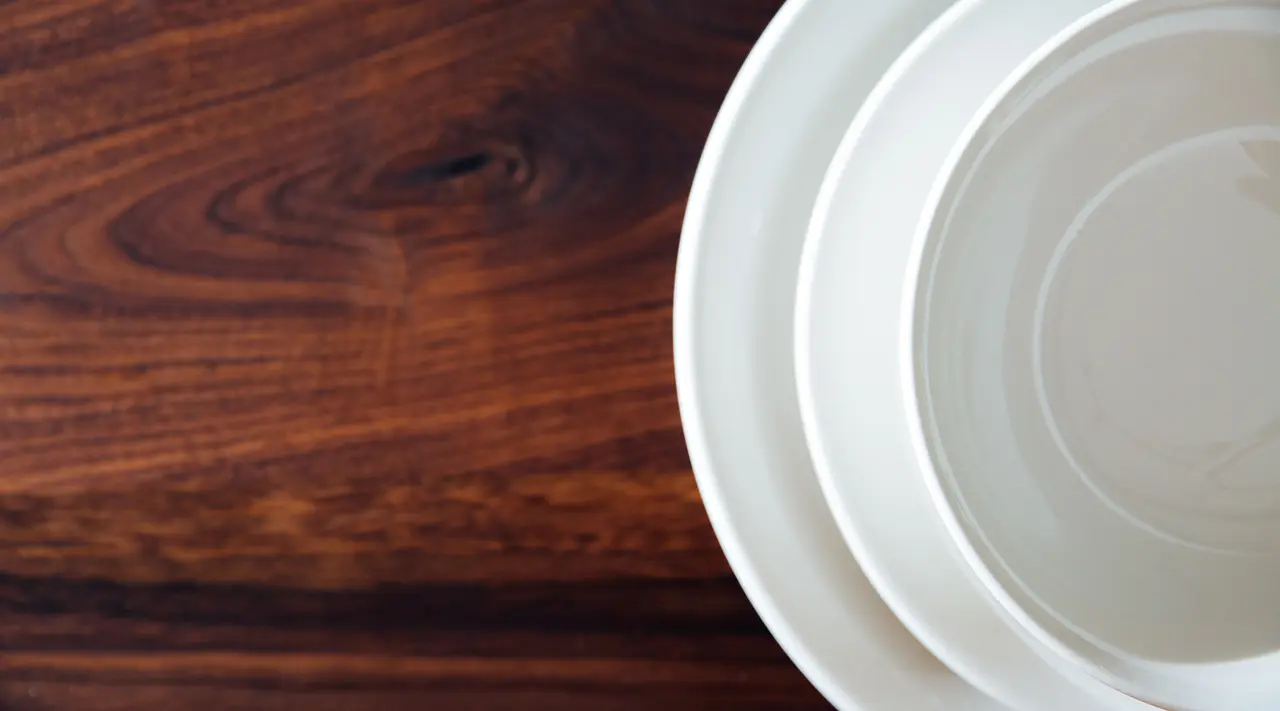
Once you’ve figured out what size plates you need, it’s important to think about what type of construction you’re looking for. In the restaurant industry, plateware is considered high quality if it can hold up for years, go in the dishwasher without chipping or cracking, tolerate temperature fluctuations (i.e. is thermal shock resistant), and maintain its beautiful glazed finish over time. The same guidelines apply to home cooks.
Anti-Chip Properties
Chips commonly occur with Plateware that hasn’t been vitrified, or heated to boiling point before being fired in a kiln. Vitrified plates have a lower porosity than non-vitrified plates, resulting in a stronger overall construction that’s much more resistant to chipping. Chipped plates aren’t just unsightly: they can also pose a hazard to your health. Not only will chipped Plateware continue to shed small bits of material and glaze into your food, but the exposed clay underneath can start to absorb liquids and harbor bacteria.
While Made In’s plates are fully vitrified and chip resistant, we still offer a 1-year no-chip warranty: if your plates somehow do end up chipping, we’ll replace the entire set.
Dishwasher Safe
Whether you’re buying plates for everyday use or for special occasions, an important point to consider is whether or not they’re dishwasher safe. Not all plates are built to withstand the high temperatures and strong detergents of the dishwasher—many are prone to warping, chipping, or cracking. Because ours is fully vitrified, each piece is fully dishwasher-safe, so you can spend less time standing over the sink after dinner.
High-Quality Construction
When shopping for Plateware, it’s important to understand what the term “high quality” actually means. Generally, a high-quality piece of cookware shouldn’t just be beautiful—it should be incredibly durable as well. Made In’s Plateware is made in Stoke-on-Trent, where pottery has been an art form for hundreds of years. Made from local English clay, the pieces undergo 360-degree glazing. Our manufacturing partner, which historically has only offered their plateware to restaurant customers, glazes their china plateware all the way around, including the base—often called the “foot”—which typically goes unfinished.
This is done for practical reasons in addition to aesthetic ones: while an unfinished foot can cause scratching when the plates are stacked, a glazed foot prevents this. 360-degree glazing is more laborious and costly, but it also makes the plates oven (and microwave) safe up to 580F and prevents scratching when stacked.
Thermal Shock Resistance
The fully-glazed finish on our ceramic plates and bowls doesn’t just prevent scratching—along with the vitrification process, it also makes the pieces thermal shock resistant. Thermal shock resistance is especially important in restaurants, where hot food needs to be plated quickly so it can make its way to the customer before it cools off. Restaurants often heat plates in the oven to assist in this, and to prevent delicate sauces from breaking.
Thermal shock occurs when an object—such as a piece of pottery—is not strong enough to withstand sudden temperature changes. This can also occur when you put a hot plate in the freezer (luckily, Made In’s Plateware is both freezer-safe and dishwasher-safe).
How Many Plates Do You Need?
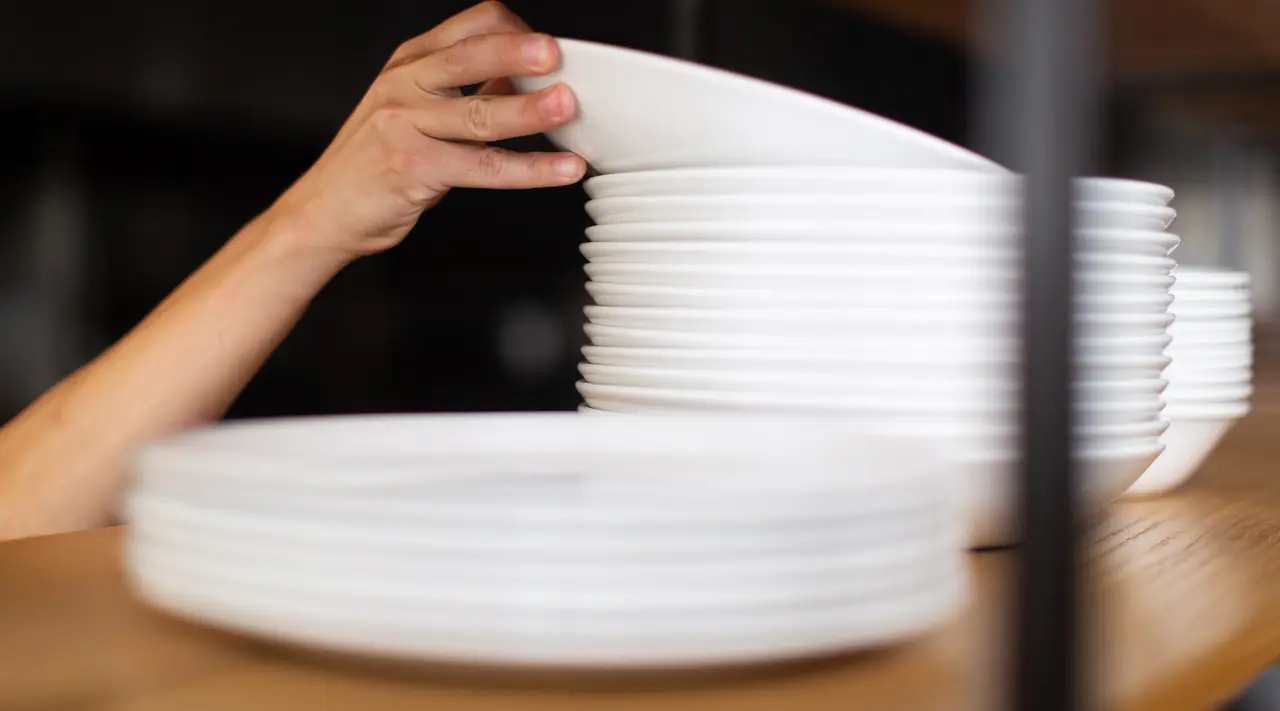
A standard dinner service includes enough places for 8 people—though you may need more or less depending on your household size and the average number of plates you’re using per meal.
Since we know that not everyone serves a bread course or an appetizer course with dinner, we also highly recommend getting creative with the different sizes. We would definitely use the Appetizer Plates for breakfast or dessert, for example, or break out the Bread and Butter plates for a midnight snack in bed.
Along with your everyday Plateware, we also recommend having one or two Service Pieces in your collection: even if you don’t regularly entertain, you’ll want a solid Serving Bowl to use for big salads, family-style dishes, or buttered popcorn on movie nights.
How Much Do High-Quality Plates Cost?
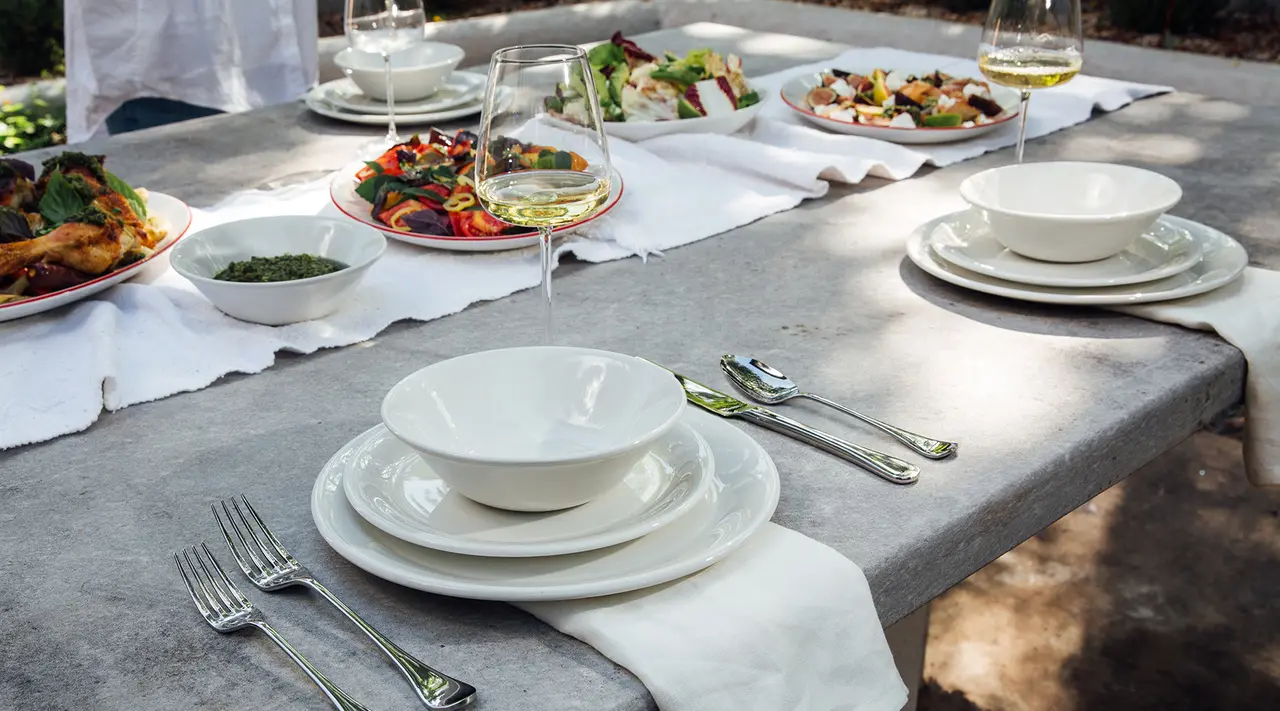
Now that you know what goes into a quality piece of ceramic Plateware, let’s talk about pricing. You can easily spend just a few dollars apiece on plates, and while that might do fine in a pinch, those looking to build out their home kitchen with sturdy, hard-wearing pieces will probably want to invest a bit more. A great place to start is with a 4-piece set of Made In Dinner Plates, which runs just over $100 and comes with both a lifetime warranty and the aforementioned one year no-chip guarantee. You can also go for the 20-Piece Tabletop Set, which runs about $600 and comes with all the Plateware, Flatware, and Serving Pieces you’ll need for a lifetime of dinners (and lunches, and breakfasts).
Our Recommended Plateware
Hopefully, all that information showed you that even if you’re not running a restaurant, you still deserve a well-crafted, long-lasting set of plates. If you’re starting a wedding registry, or just investing in quality dinnerware you won’t have to replace after a few months, Made In’s fully-vitrified ceramic Plateware is a solid bet.
